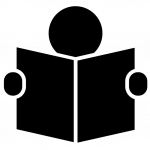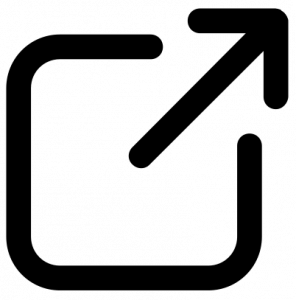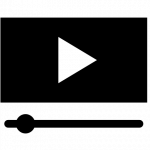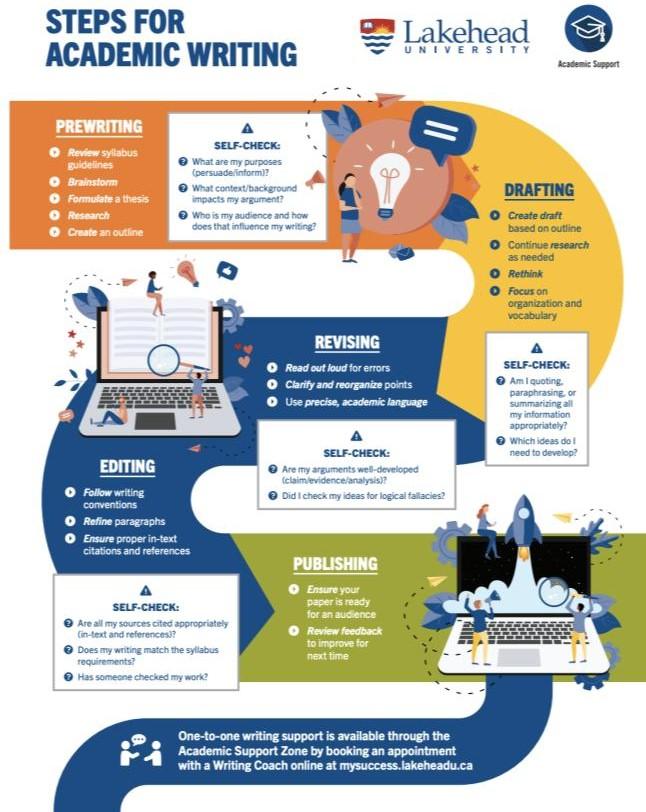Academic Literacy
Academic Literacy: Reading, Writing, Speaking, Critical and Creative Thinking
Reading
We begin by considering different types of reading and exploring a variety of effective reading strategies to help bring awareness and help strengthen your reading strategies.
 READ
READ
Take the time to read the following:
- Baldwin, A. (2020). Chapter 5.1: The nature and types of reading
 from College Success.
from College Success. - Baldwin, A. (2020). Chapter 5.2: Effective reading strategies
 from College Success.
from College Success. - Harvard Library (n.d.) Interrogating texts: Six reading habits to develop in your first year at Harvard

Learn to manage your reading load at university by learning some helpful reading strategies designed by Harvard Library and presented by Dr. Amina Yonis.
 VIEW
VIEW
Take the time to watch the following:
- Yonis, A. (2020, November 2). How I got a first in every essay | critical reading & writing technique from Harvard University

Writing
 READ
READ
Take the time to read the following:
- UM Libraries Publishing (2015). Chapter 8.1: What’s different about college writing?
 from College Success.
from College Success.
Review the Steps of Academic Writing infographic and view the Academic Writing and Integrity Campus Partner Presentations![]() to learn more about academic writing and integrity.
to learn more about academic writing and integrity.

Steps for Academic Writing Infographic (PDF)![]()
Speaking | Presenting
 READ
READ
Take the time to read the following:
- Baldwin, A. (2020). End matter A: Conducting and presenting research
 from College Success.
from College Success.
Oral communication skills benefit students academically, interpersonally, and in their future careers. Check out the following website for a list of YouTube videos designed to help students develop oral presentation skills.
 VIEW
VIEW
Take the time to watch the following:
- University of Hawaii at Manoa. (n.d.). YouTube videos for students to develop oral presentation skills.

Critical and Creative Thinking
Many great breakthroughs and discoveries in art, science and innovation have resulted from combining creative and critical thinking skills. Approaches differ considerably between the skills used in creative thinking and those used in critical thinking. However, it is because of the synergy created by the combination of both sets of skills that they are being discussed in conjunction with one another. By applying creative and critical thinking approaches to your subject area you will enrich and deepen your learning experiences. Furthermore, creative and critical thinking skills can benefit many other areas of your life from problem solving to decision making. (Coughlan, 2008)[1]
Critical Thinking
 READ
READ
Take the time to read the following:
- Baldwin, A. (2020). Chapter 7.4: Critical thinking
 from College Success.
from College Success. - Zevallos, D. Z. (2019, March 3). bell hooks on critical thinking

 VIEW
VIEW
Take the time to watch the following:
- ChallengingMedia (October 3, 2006). bell hooks: Cultural criticism & transformation

- leocine (December 10, 2006). bell hooks pt. 2 cultural criticism and transformation

“Critical thinking is about having the language and frames of reference to examine one’s life in-depth, as well as the world around us, so we can ask questions about the things we take for granted.”
(Zevallos, 2018)[2]
Sociologist, Zuleyka Zevallos, posted a blog entry titled, bell hooks on critical thinking. bell hooks was an American author, professor, feminist, and social activist who died in December 2021. Read Zevallos’ blog post and watch the two embedded videos of bell hooks talking about the power of critical thinking as a transformational and radical intervention. Trigger warning: videos contain clips from popular culture films with strong language and scenes of graphic violence and nudity.
Creative Thinking
 READ
READ
Take the time to read the following:
- Baldwin, A. (2020). Chapter 7.2: Creative thinking
 from College Success.
from College Success. - Astle, J. (2018). Do schools really “kill creativity”?

In one of the most-watched TED talks of our time, Ken Robinson claims that “schools kill creativity.” Read Julian Astle’s critique of Ken Robinson’s video as he compares and contrasts it with Tim Leunig’s video: Why real creativity is based on knowledge.
 VIEW
VIEW
Take the time to watch the following:
- TED Talks. Do schools kill creativity? | Sir Ken Robinson

- TEDx Talks. Why real creativity is based on knowledge|Tim Leunig|TEDxWhitehall

- RSA (July 21, 2015). Ken Robinson on creativity at university

- Coughlan, A. (2008). 4 creative and critical thinking, Student Learning Resources, Dublin City University. Retrieved from https://www.dcu.ie/sites/default/files/students/studentlearning/creativeandcritical.pdf
 ↵
↵ - Zevallos, D. Z. (2019, March 3). Bell hooks on critical thinking. The Other Sociologist. Retrieved from https://othersociologist.com/2018/09/22/bell-hooks-on-critical-thinking/
 ↵
↵

